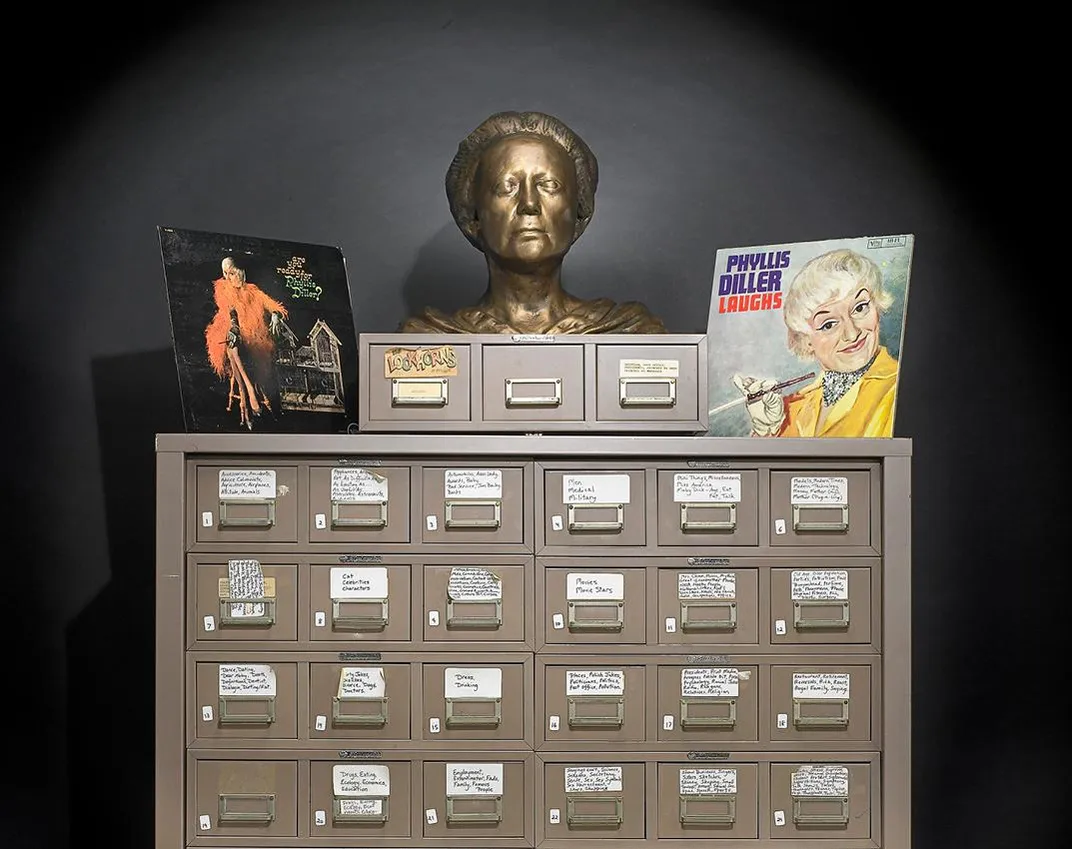There’s a “Sidedoor” Entrance to the Smithsonian and It’s Through a New Podcast
Sidedoor will air eight episodes in its first season; new episodes will debut every two weeks
/https://tf-cmsv2-smithsonianmag-media.s3.amazonaws.com/filer/83/02/83020244-33cd-479f-9fc5-f5a27f9b8713/800x600-collage.jpg)
Most visitors enter the Smithsonian museums by the front door, but the new “Sidedoor” podcasts—which debuted on October 26, with a new episode released every other Wednesday—take enthusiasts on a road less-traveled—behind the scenes into the Institution’s 19 museums, nine research facilities and the National Zoo.
The new podcast series, which can be downloaded as an app or streamed online, aims to grant listeners intimate access to the hidden treasures, artists, historians and research staff, working in the field, in laboratories and otherwise unavailable to the average visitor.
“Sidedoor is a new entrance to all of the cool and awesome stuff going on at the Smithsonian that you may not have explored before,” says Tony Cohn, the host and co-producer of the podcast, which is being produced by a new collaboration between the Office of Communication and External Affairs and the Smithsonian Digital Studio.
Each 20-plus-minute episode features three stories.
All three snack-sized stories, as Cohn calls them, are connected by a common thread. The first episode, “Tech Yourself,” explores how the ascent of the railroad industry pushed America into creating time zones. In another segment, the hosts chat with Ian Cheng, an artist who’s created a video simulation—currently on display at the Hirshhorn Museum and Sculpture Garden.
The peculiar artwork, entitled Emissary in the Squat of Gods, is a mesmerizing narrative that depicts human-like characters that interact with one another and learn in almost real-time, using data from six artificial intelligence programmers. Cheng says it’s like a video game that plays itself.
Anthropologist Joshua Bell’s on-going three-year project to determine the impact of the cellphone on teenagers is the focus of the third segment. Much is said about how the cellphone is destroying civility or empathy or shortening attention spans, but very little evidence has been collected to support theories about cultural change, says Bell, curator of globalization at the Smithsonian’s National Museum of Natural History.
Bell and his collaborators are working with a group of teens at two racially mixed high schools in Washington, D.C., surveying and interviewing them about how they use their phones at school to communicate with each other and their families. In the past the introduction of new technologies—like radio and television—tends to generate a kind of moral panic and the new gadget is often blamed for all manner of societal ills.
Cellphones have also highlighted generational divides, which is another fertile area for exploration, he says. “In some ways, the cellphone becomes a way of studying age-old concerns about kids and parenting,” says Bell.
The project, funded by the National Science Foundation and pending permission from the participants, will allow researchers to observe exactly how teens interact with their phones, says Bell. He and his colleagues—principal investigator Alexander Dent, an associate professor of anthropology at the George Washington University, and Joel Kuipers, a professor of anthropology and international affairs at GWU—are especially interested in what happens when technology fails.
“With most technology, we take it for granted until it stops working,” says Bell.
What happens when a phone breaks and someone can’t answer a text, or the battery dies and a call isn’t answered, or if a text is sent to the wrong person? The reactions will help shed light on whether and how teen culture is changing, he says.
Bell is just one of the many hundreds of scientists working at the Smithsonian whose work is rarely seen by the public.
Cohn wants listeners to hear about projects like Bell’s from the horse’s mouth. “The podcast is the voice of our people,” he says. The podcast medium also gives Cohn and his co-host Megan Detrie the ability to share ambient sounds and audio held in the collections of the archives facilities at the Smithsonian.

In the second episode, listeners get a window in on how the National Zoo found a mate for a young female orangutan named Batang, and then worked for years to solve the complications of bringing a pregnancy to fruition. The keepers discuss the ins and outs of prenatal care for the Great Ape and about the difficulty of training Batang for motherhood.
That episode, dubbed “Special Delivery,” wraps up with an investigation into what it takes to deliver a punch line—as illuminated through Phyllis Diller’s “gag file.” Soon after the now-deceased comedian retired in 2002, she donated a library card catalog to the Smithsonian’s National Museum of American History. The 48-drawer wooden filing cabinet—Diller referred to it as "her life of one-liners,"—held more than 50,000 index cards, each one embossed with a single typewritten gag line.
Cohn’s excited about an upcoming episode that will highlight a Smithsonian astrophysicist’s smartphone app that assigns music notes to pulsars in a bid to make his field more accessible to the average human. And, he also is looking forward to sharing with listeners a story about Smithsonian researchers who are helping the city of Irbil in Iraq to preserve antiquities that are under threat by terrorists.
The podcast is available through iTunes, Google Play, and can be streamed at the Sidedoor homepage.
/https://tf-cmsv2-smithsonianmag-media.s3.amazonaws.com/accounts/headshot/AliciaAult_1.png)



/https://tf-cmsv2-smithsonianmag-media.s3.amazonaws.com/accounts/headshot/AliciaAult_1.png)